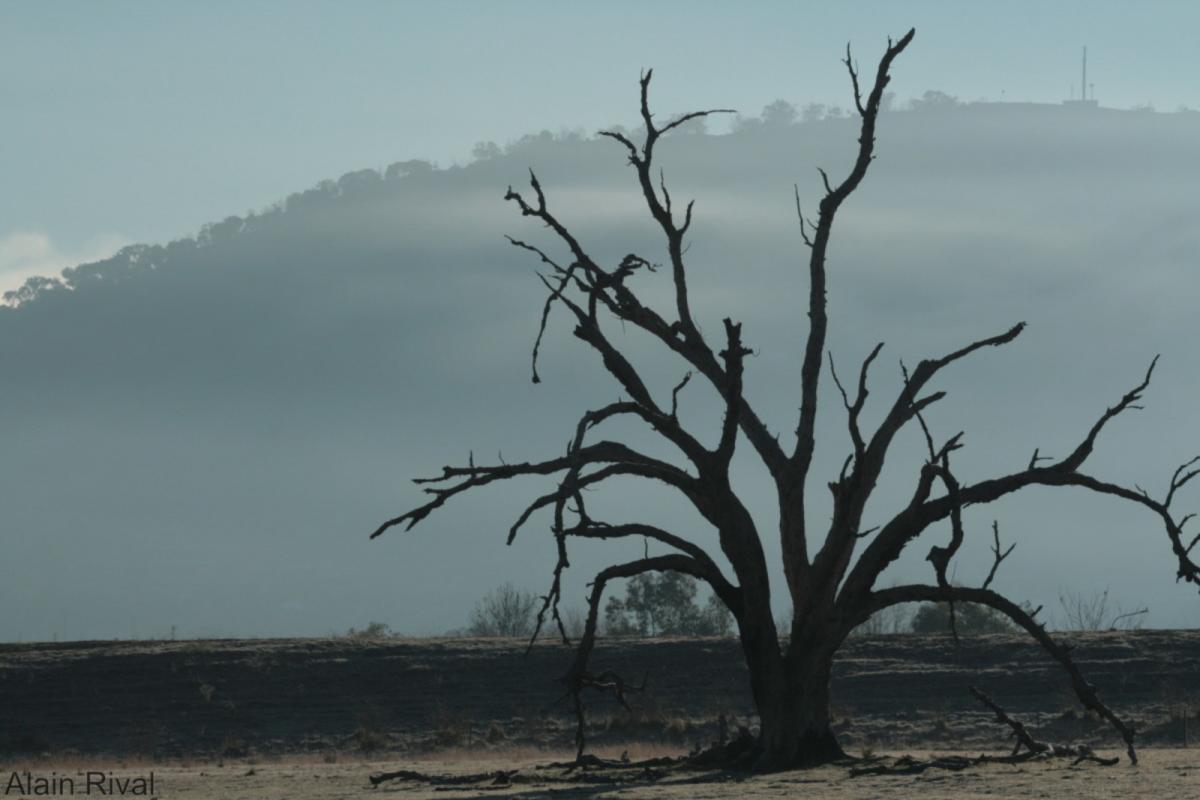Results & impact 10 October 2025
- Home
- Press area
- Press releases
- drought Europe damage agriculture
Climate change | Drought reduces carbon uptake and crop yields

In Northern and Eastern Europe, the 2018 drought caused an average drop in crop yields of 40%, compared to a normal year © A. Rival, CIRAD
Never before had Europe experienced a drought of such magnitude as in the summer of 2018. A number of high temperature records were set, wildfires broke out in the Nordic countries and several countries were hit by poor harvests. Central Europe recorded rainfall levels up to 80 % below normal in spring, summer and autumn, and heatwave temperatures that it had not seen since the 1950s. Because of climate change, drought episodes could become more frequent in Europe, but also in South America, Australia, Central and Western Asia, and Africa. Clearly identifying their causes in order to anticipate them and understanding the implications of such climate anomalies for agricultural production and markets are key challenges to ensure food security in the coming decades.
Forest carbon sink reduction, crop loss and grassland browning
The article published on 7 September describes the different impacts of the 2018 drought on forests and crops in Europe. The findings show that in Europe that year, forests protected themselves from the heat by reducing their evaporation and their growth, which resulted in a decrease in carbon dioxide uptake: for these ecosystems, carbon sinks diminished by 18 % relative to a normal year.
With the drought, some ecosystems have thus changed from carbon sinks to carbon sources. In contrast, rewetted peatlands seem to have fared better, especially due to the growth of new plants. This is good news, because peatland rewetting is one of the methods commonly used to mitigate the impacts of climate change.
According to the findings presented, crops initially benefited from the warm and sunny weather in spring 2018, but then had insufficient water for their roots during the summer heatwave. Because of the drought, grasslands turned brown, leading to shortages of hay for livestock, and many crops produced the lowest yields in decades, resulting in financial losses in many sectors of activity. However, the higher than normal yields recorded in Southern Europe – due to favourable spring rainfall conditions – partially offset the substantial decrease in agricultural production in Europe. “Our findings show the importance of analysing the impacts of climate change on a large scale to understand its implications for food security ”, says Damien Beillouin, a researcher in agronomy and data analysis at CIRAD and one of the lead authors of the study.
The study also shows that vegetation response to a very dry summer is strongly dependent on the climate conditions of the previous spring, or even winter. “If the scientific community could predict these droughts and their consequences several months prior to their onset, this would support adaptation to climate change ”, says Wouter Peters of Wageningen University in the Netherlands, another of the authors of this theme issue.
Further studies on climate change are underway at CIRAD, especially concerning the impacts on horticultural production in West Africa.
This study is the result of efforts by more than 200 scientists within the ICOS research infrastructure, which brings together all of the leading research institutes and universities in Europe, and of which several of CIRAD’s units are partners.
Find out more: https://www.icos-cp.eu/event/975
From carbon sink to carbon source: the case of tropical forests Climate warming and the ever more frequent drought episodes observed are transforming certain ecosystems, which previously stored carbon, into sources of greenhouse gases. Although the findings of the study inPhilosophical Transactions B concern Europe, this is not just a European problem: tropical forests are also victims of it. According to a study published in Science in May, to which a number of CIRAD’s scientists contributed, around three quarters of tropical forests are now becoming carbon emitters because of climate warming. This phenomenon is all the more alarming because, according to some scientists, it could be coupled with the savannisation of these forests, linked to deforestation. In the Amazon for example, “around 20 % of the forest has been destroyed and converted into agricultural land since the 1970s ”, says Plinio Sist, an ecologist at CIRAD and Director of the Forests and Societies unit. “According to some estimations, the tipping point that could initiate a savannisation process is between 25 and 30 %. The consequences would be disastrous for the whole continent ”. |
References
Damien Beillouin, Bernhard Schauberger, Ana Bastos, Phillipe Ciais et David Makowski. 2020. Impact of extreme weather conditions on European crop production in 2018. Philosophical Transactions B



























